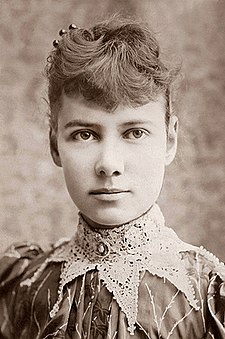A few weeks ago I posted a review of a new and very exciting graphic novel called
Calamity Jack. This title is a follow on to the Hales' first graphic novel,
Rapunzel's Revenge. The two authors and the illustrator very graciously agreed to do an interview about their new book.
First I talked to Shannon and Dean, the authors:
Marya: Did you know that you would be writing a story about Calamity Jack when you wrote Rapunzel’s Revenge?
SH: Hi Marya! When we pitched RR, we only had a partial script, and Bloomsbury offered us a 2-book deal. At that point, we had to decide, sequel or something entirely new? As we wrote RR, we realized Jack was our guy. Though it’s not told in RR, we created it during that process.
DH: Yeah, I think we knew pretty early the second book would be about Jack, but the story itself took a while to actually come together.
Marya: The adventures in this story combine fantasy, fairytale, and technology. How did you come around to creating such a delightfully bizarre world?
SH: We took things we love and stuffed them all together: fairy tale characters and creatures, steampunk, comic books, capers, action, comedy, romance! Why not? We didn’t want to skimp.
DH: The trick was to not make the story *about* all those cool things. The best thing to carry a story is a character, I think, and once we figure that out, sprinkle in the cool. I did lobby for the bandersnatch to be the main character, but Shannon didn’t think people could relate to it. I had no problems relating, but that’s just me.
SH: The only person I know who could relate to a mute creature with mouths for eyes.
Marya: Jack’s efforts to gain honor, respect, and love seems to lie at the heart of the story. Was this always your intention or did Jack claim this for himself as you were writing?
SH: Jack claimed this himself. While we knew the basics of his story, we didn’t know why. We wrote two completely different stories for Jack before the final, but they fell flat. It was such a relief when his underlying story finally revealed itself.
DH: I think that was all a part of finding his character, finding what it was about him that made him interesting and human. Once that was finally taken care of, I felt a lot more comfortable with the giant ants.
SH: Whatever. You always felt comfortable with the giant ants. You’d share a house with giant ants, so that you could occasionally point and scream, “It’s them! It’s THEM!”
Marya: How do you work together, and do you find it difficult or easy to do?
SH: Both! It’s more time consuming and can be frustrating. But I loved going on walks with Dean and discussing plot, hammering out ideas, seeing what nuggets of scenes he wrote each day.
DH: This is totally true, though I think Shannon had the harder job. She had to write *and* poke me with a stick, while all I did was figure out new ways to be lazy. And occasionally write.
Then I talked to Nathan, the illustrator:
Marya: Did you discuss the story with Shannon and Dean before you began to create drawings for this story?
Dean: Yeah, we talked a lot about the story. I, for example, really wanted the character Brute, from Rapunzel’s Revenge, to join the team, so for a while he was part of the Rapunzel gang. But he didn’t quite work out. We kicked a lot of ideas around.
Marya: Did the three of you decide what the characters and the world would look like, or was that something that you did on your own?
I sent out a lot of character designs—a lot more than I did for Rapunzel. And we’d talk about what worked and what didn’t. I had a very specific look for how I wanted the city to be. I also pushed hard for it to be set in winter. Shannon and Dean were willing to let me run wild with the visuals. They’d give me a quick phrase to work with, for example, “A chained up monster with mouths for eyes.” Then I’d do the drawing (that’s the Bandersnatch monster in JACK, by the way.)
Dean: Can you tell us a little about your work process? How many sketches and drawings do you create before you have a completed piece of work?
I did the whole book in pencil sketch form. Sent it in to the publisher, then inked all the pencil drawings, then colored them digitally. The coloring was the hardest. It took forever. I actually had to hire a handful of color mappers to help me get the coloring done on time.
Thank you so much all three of you.

























